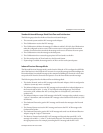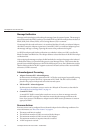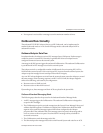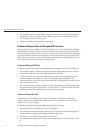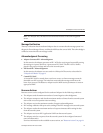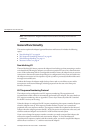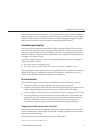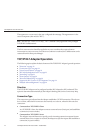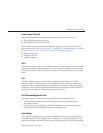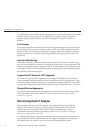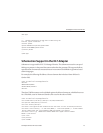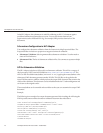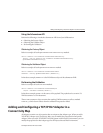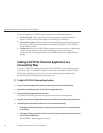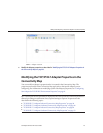
Lower Layer Protocol
This section describes the two supported envelope types used in the HL7 protocol:
■
HLLP (Hybrid Lower Layer Protocol)
■
MLLP (Minimal Lower Layer Protocol)
Both envelope types use the following conguration parameters. For more information on
these parameters, see
“Lower Layer Protocol — TCP/IP HL7 V2 Inbound Adapter” on page 40
or “Lower Layer Protocol — TCP/IP HL7 V2 Outbound Adapter” on page 55.
■
Start Block Character
■
End Data Character
■
End Block Character
MLLP
The MLLP envelope consists of a Start of Block component, a Data component, an End of Data
component, and an End of Block component. The size of the HL7 Data eld is determined by
the length of the data (number of bytes between start and end), with a maximum size of 99999
Bytes.
HLLP
The HLLP envelope consists of a Start of Block component, a ”D’ (Data) or ”N’ (NAK)
indicator, an HL7 Version component, a Carriage Return, a Data component, a Block Size
component, a Block Checksum component, an End of Data component, and an End of Block
component. The size of the HL7 Data eld is determined by the length of the data (number of
bytes between start and end), with a maximum size of 99999 Bytes.
HL7 Acknowledgment Level
The Adapter supports sending and receiving both HL7 acknowledgement types:
■
Application acknowledgment: This acknowledgement is sent when the message is
successfully received.
■
Commit (accept) acknowledgment: This acknowledgement is sent after the message is
successfully and functionally processed by one receiving system.
Journaling
The Adapter provides the option to journal successfully received or sent messages and their
corresponding ACKs. The messages are sent to a JMS queue or topic, depending on how you
congure the Adapter, and the ACKs are stored as a JMS property, HL7_ACK, of that message.
SunAdapterforTCP/IPHL7Overview
SunAdapterforTCP/IPHL7User's Guide 23



